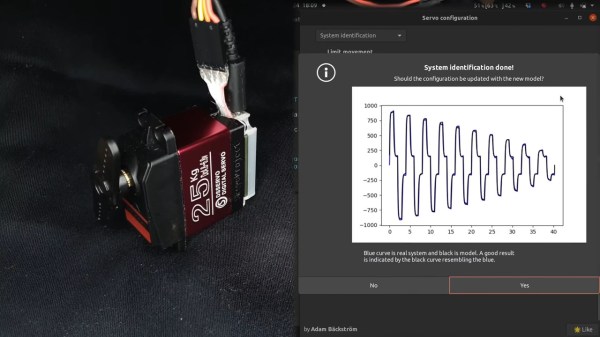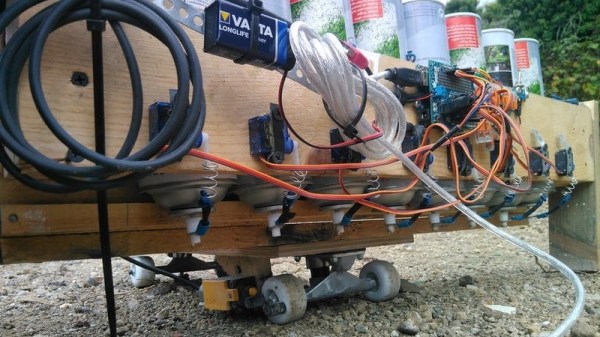Despite how it might appear in bad action movies, throwing a knife and making it stick in a target is no easy feat. Taking inspiration from the aforementioned movies, [Quint] and his son built a magazine-fed knife throwing machine, capable of sticking a knife at any distance within its range.
Throwing a sharp piece of metal with a machine isn’t that hard, but timing the spin to hit the target point-first is a real challenge. To achieve this, [Quint] used a pair of high-performance servo motors to drive a pair of parallel timing belts. Mounting a carriage with a rotating knife-holder between the belts allows for a spinning throw by running one belt slightly faster. The carriage slides on a pair of copper rails, which also provide power to the knife holder via a couple of repurposed carbon motor brushes.
At first, the knife holder was an electromagnet, but it couldn’t reliably hold or release the stainless steel throwing knives. This was changed to a solenoid-driven mechanism that locks into slots machined into the knives. Knives are fed automatically from a spring-loaded magazine at the back as long as the trigger is held down, technically making it full-auto. To match the spin rate to the throwing distance, a LIDAR sensor is used to measure the distance, which also adjusts the angle of the aiming laser to compensate for the knife’s trajectory.
The development process was fraught with frustration, failure, and danger. Unreliable knife holders, exploding carriages, and faulty electronics that seemingly fired of their own accord were all challenges that needed to be overcome. However, the result is a machine that can both throw knives and nurture a kid’s passion for building and programming.
Continue reading “Knife Throwing Machine Gets The Spin Just Right”















